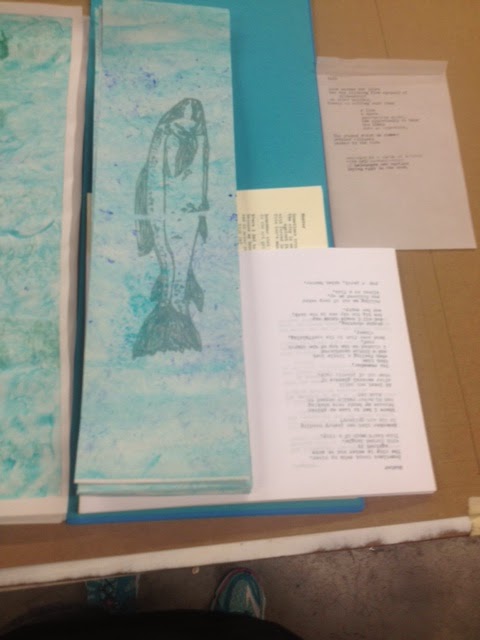Using screen printing has been a really interesting way of making this project happen. Initially I was going to do the whole book in "duo-tone", meaning I would be using two layers of ink. After, doing some tests of the second layer of ink I decided to keep this only for the images because properly registering all of the pages of text would take more time and paper than I have. Mostly paper. Have I mentioned this before? I know I have. Starting any printing project means using way more paper than you would expect. Doing the whole book in duo-tone would mean making twice as many first layer prints or more with the expectation that on the second layer, I would probably waste half of my attempted prints. Anyway, here is a quick pick of how one of the images turned out.
After getting everything folded, I bound the signatures using a 3 hole bookbinding stitch, using bookbinders thread. Super simple but it did the trick.
The outer sheet of the signature will become the inner part of the cover once the books are all glued together. Here, I used some beautiful mulberry paper for two reasons: 1) it is super pretty (obviously!) and 2) Mulberry paper is really strong and archival quality. This is because the mulberry fibers that are used to make the paper are very long. Because this paper comes in the wrong size for what I was doing I had to trim the paper. I did this using water and tearing it rather than cutting it to size because I wanted to keep the nice edging on the paper.
I also glued the covers together, so now they are are all ready to be put together with the text block. To do this, I used some small Litho stones that we have in the print shop for weight.
Tomorrow, I will be heading back to Kelowna and back to finish with the final gluing of everything. Onwards!

























